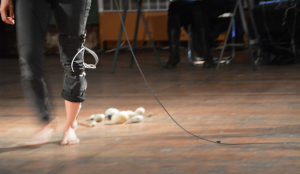Bodyscape
By Luca Forcucci The main request of the residency was to ‘BE’. A paramount condition in order to let ideas flow in total freedom. There was no obligation of outcomes. Ideas (at least for me) appeared in diverse situations, such as discussion during trails or while having a coffee in the kitchen. I worked mainly on the followings projects:
The main request of the residency was to ‘BE’. A paramount condition in order to let ideas flow in total freedom. There was no obligation of outcomes. Ideas (at least for me) appeared in diverse situations, such as discussion during trails or while having a coffee in the kitchen. I worked mainly on the followings projects:
Thursday, 08/20/2015
 The main request of the residency was to ‘BE’. A paramount condition in order to let ideas flow in total freedom. There was no obligation of outcomes. Ideas (at least for me) appeared in diverse situations, such as discussion during trails or while having a coffee in the kitchen. I worked mainly on the followings projects:
The main request of the residency was to ‘BE’. A paramount condition in order to let ideas flow in total freedom. There was no obligation of outcomes. Ideas (at least for me) appeared in diverse situations, such as discussion during trails or while having a coffee in the kitchen. I worked mainly on the followings projects:
- Soundwalks during the open house of the residency: The participants were free to speak, but all of them stayed silent during the 30 minutes trail. Another interesting aspect was the discussion following the trail: Two groups, which attended the walks mentioned self awareness in relation to listening to their own bodily sounds. Moreover, they both started a discussion about the importance of music in neurodegenerative diseases, although I only proposed to listen to the environmental sound and never mentioned music, apart the fact I introduced my self as a composer;
- During a discussion with Guillermo Munoz, a physicist, after a dinner, who was looking for ways to develop a periodic table for nano particules, I suggested to investigate a fourth dimension. http://leonardo.info/blogs/nano-table/;
- A sculpture in a tree, as a deprivation (of sound) chamber, to be installed in the coming week in the trails, in collaboration with Christine Lee;
- Writings;
- Bodyscape, a composition based on biological and sonic information of the body of a dancer, I developed the strategies while in residency. It was then developed as a work in progress at the Lab Gallery in San Francisco from July 30, and premiered on August 4.
